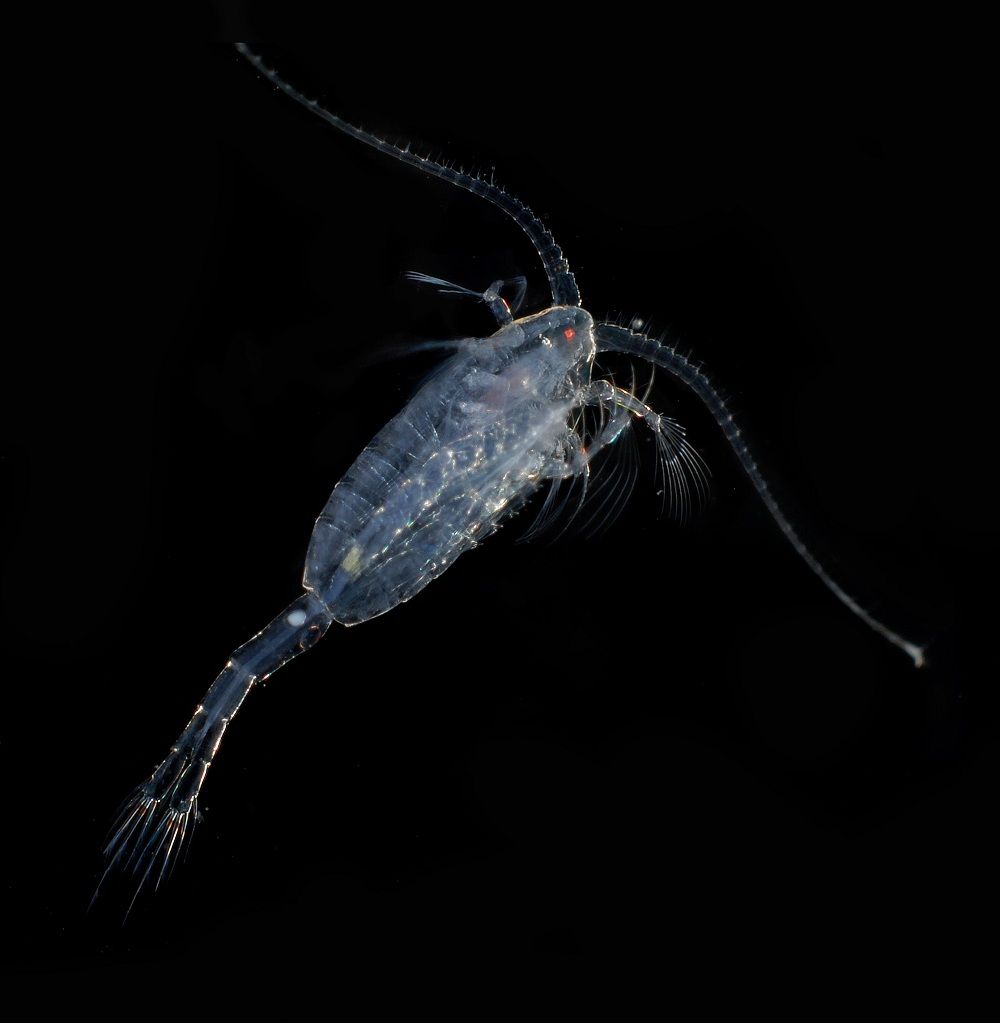How Tiny Animals Comb the Oceans for Dinner

Tiny oceangoing animals called copepods have developed special skills to find their favorite plant foods in the vast open sea, researchers have found.
"The concentration of plant biomass is very, very low, so the organism feeding on plants need to search a huge volume of water in order to get enough food," study researcher Thomas Kiørboe, of the Technical University of Denmark, told LiveScience."That's supposed to be their main food source. That's why its a mystery."
New video of copepods, tiny crustaceans related to crabs and lobsters, reveals they use several methods to find dinner, including touch, chemical sensing and water disturbances from moving prey.
Tiny animals, big ocean
Copepods and other zooplankton, the generic name for tiny ocean animals, have to search through water 1 million times their volume to find enough food to survive every day. This is extremely difficult because at their size, water is as thick as molasses. Different species of zooplankton use different, specialized methods to find food.
Some of the types of tiny animals generate a current to suck in and filter the water around them, but these animals developed specialized parts that the copepods don't have to complete this sucking and filtering. But, if the copepods depended on just bumping into their prey, they wouldn't find nearly enough to survive.
Researchers have observed that copepods wait to ambush prey and also chase after moving prey. Bumping into prey or actively searching out prey can be problematic, because the water forms a boundary layer around the animal that acts like a forcefield, pushing whatever is near the animal away; so the likelihood of any prey coming into direct contact is lessened.
Sign up for the Live Science daily newsletter now
Get the world’s most fascinating discoveries delivered straight to your inbox.
Special senses
The M. longa didn't attack the tiny plant until after it was at its side. The plantlike organisms were only detected if they were very close to the copepod's large feeding appendage. These feeding appendages stick out far enough from the copepod's body that they have a decent chance of running into food. They can also sense the organic chemicals released by the dinoflagellates.
The moving prey (the juvenile copepod), on the other hand, was detected right after it did a startled little jump in reaction to the larger animal's scent. The M. longa probably detected this movement in the water with tiny hairs all over their bodies, researchers suggest.
"They have small hairs in all directions, they can form a rather precise image of the prey, where it is and what direction it's swimming," Kiørboe said. "They have no vision, no eyes, but they can form images by other senses."
The study will be published in the Dec. 7 issue of the journal Biology Letters.
You can follow LiveScience staff writer Jennifer Welsh on Twitter @microbelover. Follow LiveScience for the latest in science news and discoveries on Twitter @livescience and on Facebook.
Jennifer Welsh is a Connecticut-based science writer and editor and a regular contributor to Live Science. She also has several years of bench work in cancer research and anti-viral drug discovery under her belt. She has previously written for Science News, VerywellHealth, The Scientist, Discover Magazine, WIRED Science, and Business Insider.










